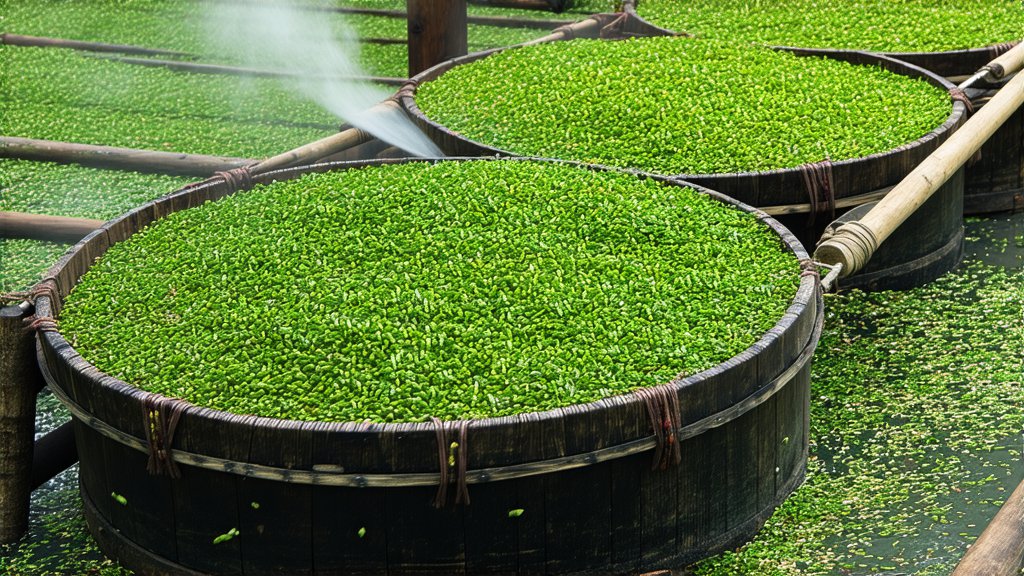
Lapsang Souchong, often referred to as "Smoky Cinnamon," is a distinctive variety of black tea that hails from the Wuyi Mountain region in Fujian Province, China. This unique tea has a rich history dating back several centuries and is renowned for its complex flavor profile and traditional smoking process. In this article, we will delve into the origins, types, production methods, brewing techniques, and tasting notes of Lapsang Souchong, offering international readers an in-depth look at this fascinating tea.
Origins and History
The story of Lapsang Souchong begins in the early 19th century, during the Qing Dynasty. According to legend, a group of tea farmers were forced to evacuate their homes due to a sudden invasion. In their haste, they hurriedly dried their freshly plucked tea leaves over smoky fires to prevent them from spoiling. To their surprise, this unconventional method imparted a unique smoky flavor to the tea, which was met with great appreciation by local connoisseurs. Thus, Lapsang Souchong was born, and it quickly gained popularity among tea enthusiasts.
Types of Lapsang Souchong
Lapsang Souchong comes in various grades and styles, each with its own distinct characteristics. The most well-known types include:
-
Traditional Lapsang Souchong: This is the original form of the tea, known for its intense smoky flavor and aroma. It undergoes a longer smoking process, resulting in a more robust and complex taste.
-
Aroma Type (Xiang Yan): As the name suggests, this type focuses more on the aroma than the smokiness. It has a lighter smoke profile and a sweeter, fruitier flavor.
-
Grade Classification: Lapsang Souchong is also classified based on the size and quality of the tea leaves. Grades range from high-quality whole leaf buds to lower-grade broken leaves. Higher grades offer a more refined taste and are considered premium.
Production Process
The production of Lapsang Souchong involves several meticulous steps that contribute to its unique character:
-
Plucking: The tea leaves are handpicked during the peak growing season, usually in late spring or early summer. Only the tender shoots and top two leaves of the tea plant are selected.
-
Withering: The freshly plucked leaves are spread out in bamboo trays and allowed to wilt under the sun or in a well-ventilated area. This helps to reduce moisture content and prepare the leaves for rolling.
-
Rolling: The withered leaves are then rolled by hand or machine to break down cell walls and initiate oxidation. Rolling also helps to shape the leaves and release their natural enzymes.
-
Oxidation: The rolled leaves are spread out again to oxidize, turning them from green to dark brown. Oxidation is a crucial step that develops the tea's flavor and aroma.
-
Smoking: Unlike other black teas, Lapsang Souchong undergoes a unique smoking process. After oxidation, the leaves are placed over burning pinewood fires or in special smoking chambers. The smoke penetrates the leaves, imparting a distinctive smoky flavor and aroma. The duration and intensity of smoking can vary, affecting the final taste of the tea.
-
Drying: Finally, the smoked leaves are dried to reduce moisture content and stop further oxidation. Drying ensures the longevity of the tea and preserves its unique qualities.
Brewing Techniques
To fully appreciate the nuances of Lapsang Souchong, proper brewing techniques are essential. Here’s a step-by-step guide:
-
Water Temperature: Use freshly boiled water at around 200°F (93°C). The high temperature helps to extract the flavors and aromas effectively.
-
Tea Quantity: For a single cup, use approximately 2-3 grams of Lapsang Souchong leaves. Adjust according to personal preference and the size of your teapot or cup.
-
Steeping Time: Steep the tea for about 3-5 minutes. Over-steeping can result in a bitter taste due to the tea's strong nature. Start with a shorter steeping time and adjust as needed.
-
Multiple Infusions: Lapsang Souchong can be enjoyed for multiple infusions. Each subsequent infusion will reveal different layers of flavor, becoming lighter but retaining its smoky essence. Adjust steeping times accordingly for each infusion.
Tasting Notes
When tasting Lapsang Souchong, pay attention to the following aspects:
-
Appearance: The dry leaves should be twisted and have a dark brown color with hints of orange or red. The infused tea should have a bright, reddish-brown hue.
-
Aroma: Before even tasting, take a moment to inhale the smoky aroma. A high-quality Lapsang Souchong will have a rich, complex fragrance with notes of camphor, pine resin, and sometimes a subtle hint of fruitiness.
-
Flavor: On the palate, expect a bold and full-bodied experience. The initial taste should be smoky, followed by a sweet aftertaste. Depending on the type and grade, you may also detect hints of cinnamon, caramel, or dried fruits.
-
Mouthfeel: Lapsang Souchong should have a smooth and silky mouthfeel, with a slight astringency that balances the sweetness and smokiness.
-
Aftertaste: A good Lapsang Souchong will leave a lasting aftertaste that lingers on the tongue, gradually fading but still memorable.
In conclusion, Lapsang Souchong is not just a tea; it’s a journey through history, tradition, and craftsmanship. Its unique smoky flavor and aroma make it a standout among black teas, appealing to those who appreciate bold and complex profiles. Whether enjoyed as a morning pick-me-up or a soothing evening brew, Lapsang Souchong offers a sensory experience that is both captivating and unforgettable.